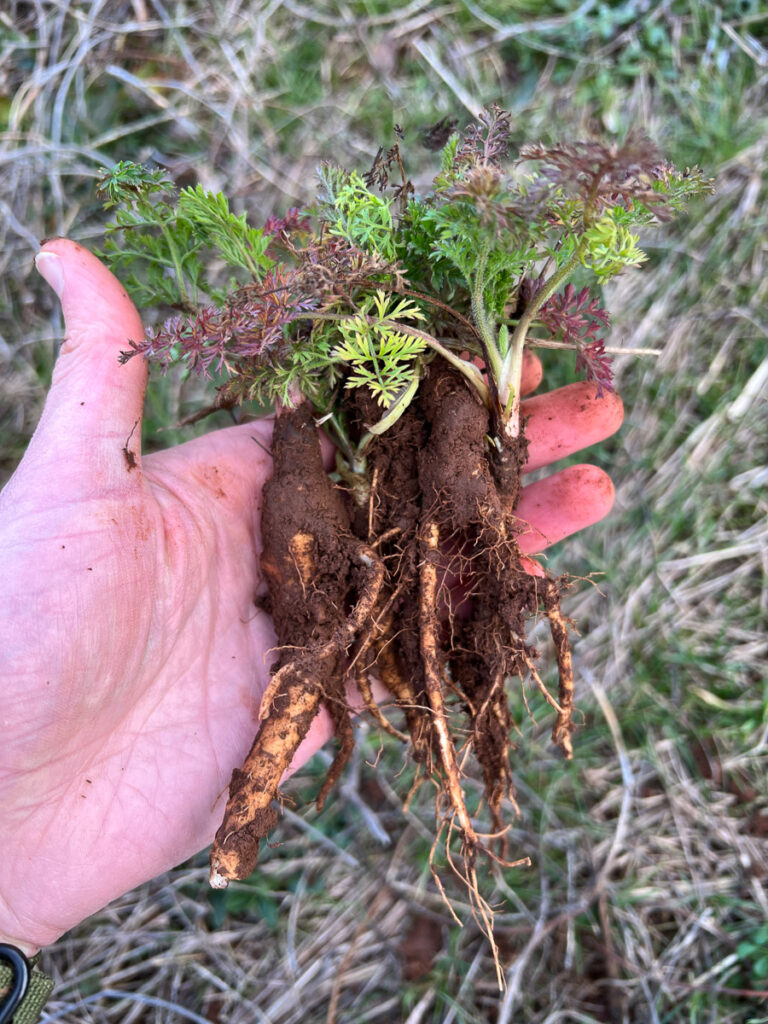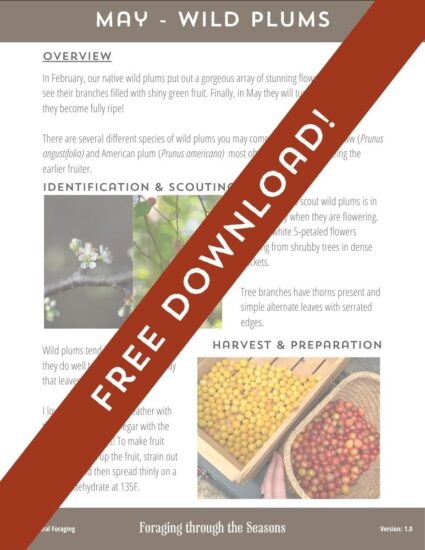Late fall to early spring is a great time to forage for roots and tubers. One of the more popular plants with an edible root is wild carrot (Daucus carota). However, it requires an additional level of caution.
Wild carrot can bear some resemblance to deadly poisonous members of the carrot family like Poison Hemlock (Conium maculatum) or Water Hemlock (Cicuta maculata). I have two other articles that cover the full set of details for each of them.
You can click here for the water hemlock article and here for the poison hemlock article.
In the summer, poison hemlock is the one that people are more likely to mistake for wild carrot, but in the winter, I could see people mistaking both poison and water hemlock.
TLDR
The biology of wild carrot
First, we need to talk a little about the biology of wild carrot.
Wild carrot is a biennial. This means that it has a two-year reproductive cycle. In the first year, the plant develops a fleshy taproot and grows aboveground as a basal rosette. The second year, it sends up a stalk and the taproot thins and becomes woody.
There are edible parts of wild carrot beyond the taproot, like their peeled shoots, flowers, or seeds. In my journey of foraging for wild carrot I became comfortable eating the shoots far before I was comfortable eating the roots.
Part of this is because one of the important distinguishing features, the presence of hair on wild carrot, is literally on the stem itself and the hairs are far larger and longer on second-year stalks.
With first-year rosettes, the hairs are a little smaller (but always present), but the part that I’m actually going to eat, the root, doesn’t itself have as clear a distinguishing characteristic (this will be discussed more in the following section).
In the winter, the remnant stalks are used for scouting for where the first-year rosettes are going to be coming up, not eating of course. More on that in the next section!
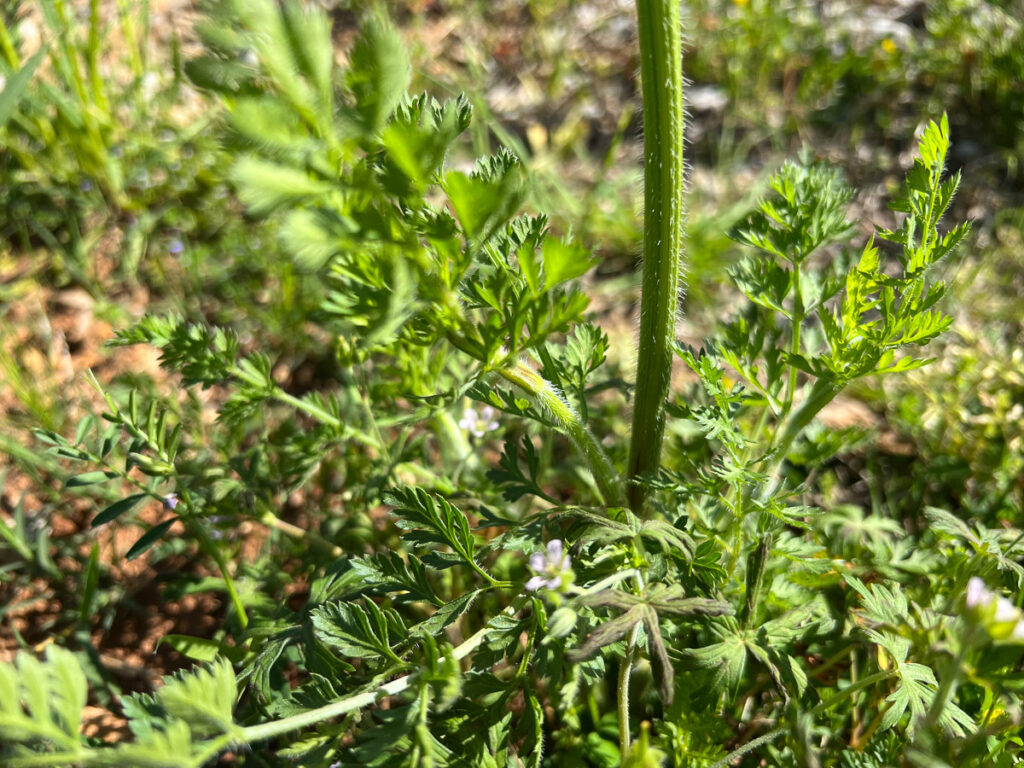
Scouting for wild carrot in winter
The second-year remnant stalks and seed heads of wild carrot often persist into the winter. Sometimes, they will fall down as well, so if you don’t find any in one spot, it doesn’t necessarily mean they aren’t there.
The compound umbel seed heads, especially the ones curled up like a bird’s nest, are the easiest things to look for.
The best places to look are open fields and disturbed areas where the plant has access to lots of sunlight.
Now, we just need to know what to look for to tell them apart!
Distinguishing winter characteristics of wild carrot
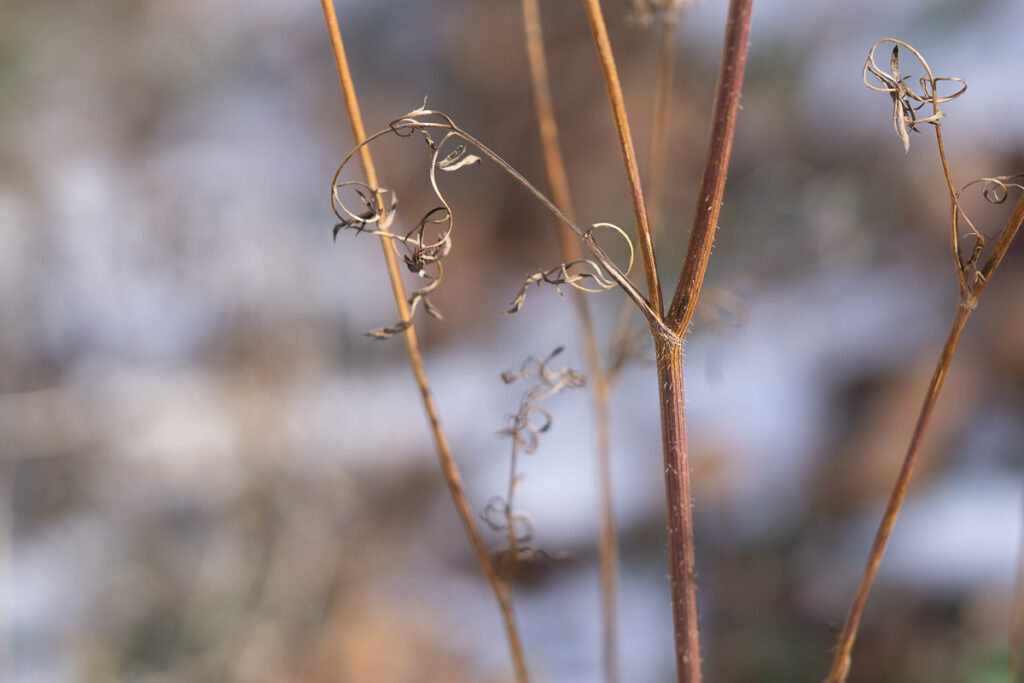
I am going to provide you with a set of characteristics and show you how each of them differs. I will refer to the deadly lookalikes as “the lookalikes.” Remember, in cases like this, it’s best always to use multiple characteristics.
Stems
The stems of wild carrot have a diameter at the base that is typically smaller than half an inch, whereas, with the lookalikes, they are usually greater than half an inch.
The hairs on the stem of wild carrot often persist into the winter, but they may be thinner. Sometimes, they will fall off but leave behind bumps from where they were attached. Because of this, the stems will feel rough to the tough.
The lookalikes both have stems without any hairs and feel much smoother to the touch.
Most parts of wild carrot stems are sponge-filled compared to the lookalikes, which have stems that are hollow. Just make sure to use stems with a larger diameter to sample this. Smaller stems that are hollow can sometimes appear sponge-filled.
Seed heads
Wild carrot has dense seed heads that typically curl towards the center as the plant dies back. The lookalikes have sparser seed heads that do not curl towards the center.
Even if some of the umbel stems of wild carrot are still pointing outwards, you’ll usually find the seeds clustered towards the center, another thing that the lookalikes lack.
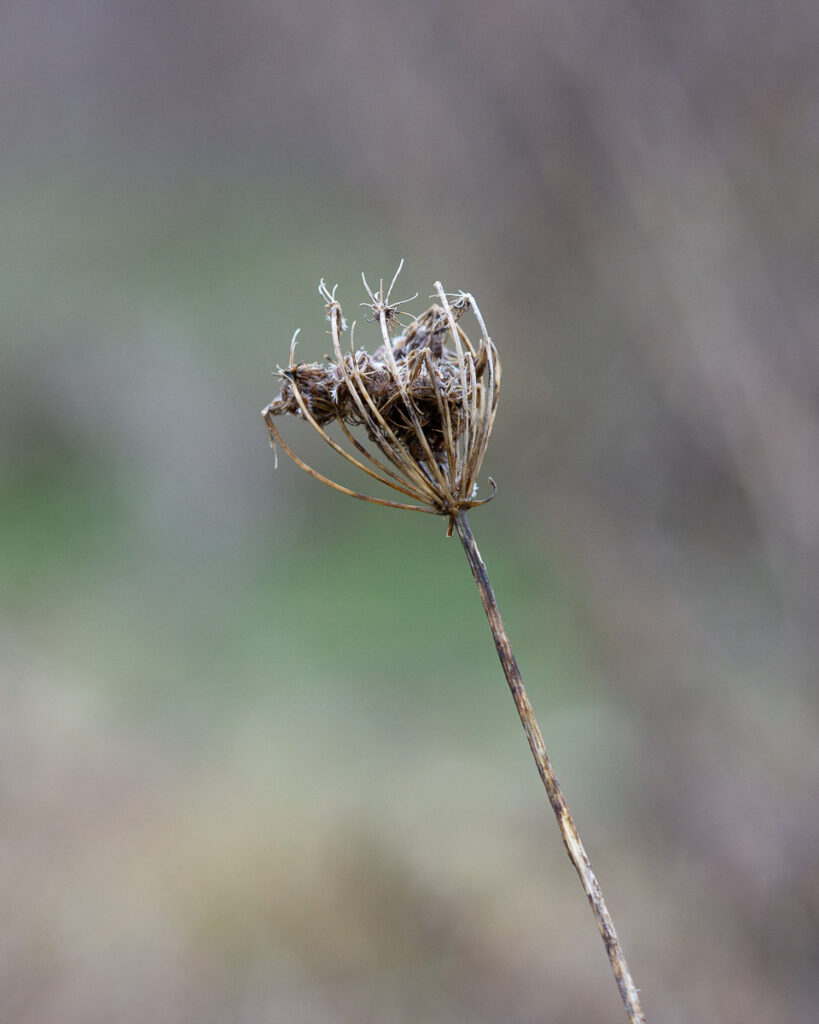
Seeds
The seeds of wild carrot clearly differ from the lookalikes, especially with the aid of a little magnification. Wild carrot seeds have rows of spines on them. This will create a somewhat “hairy” appearance if viewed from the naked eye.
The lookalikes have seeds that do not have spines on them.
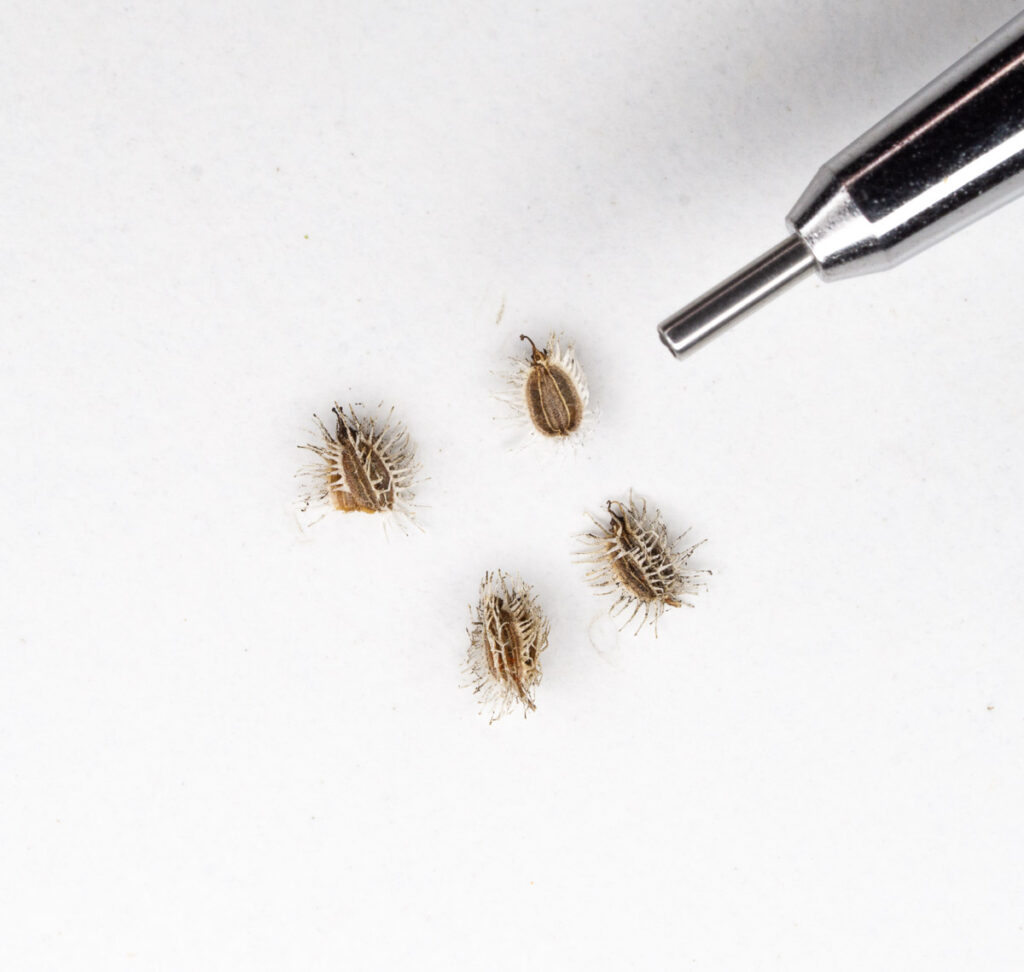
Growth Habit
Wild carrot rarely grows beyond 4ft in height. The lookalikes typically grow taller, up to 7ft.
Young Greens
In some areas, young greens can be found even in the wintertime. Here again, the main differentiator is that wild carrot will have the presence of hairs, whereas the lookalikes will not.

Quick checklist for wild carrot
For a quick checklist, wild carrot has:
- Clustered seed heads
- Seeds with spines
- Hairy stems
- Stems with a spongy pith
and the lookalikes do not.
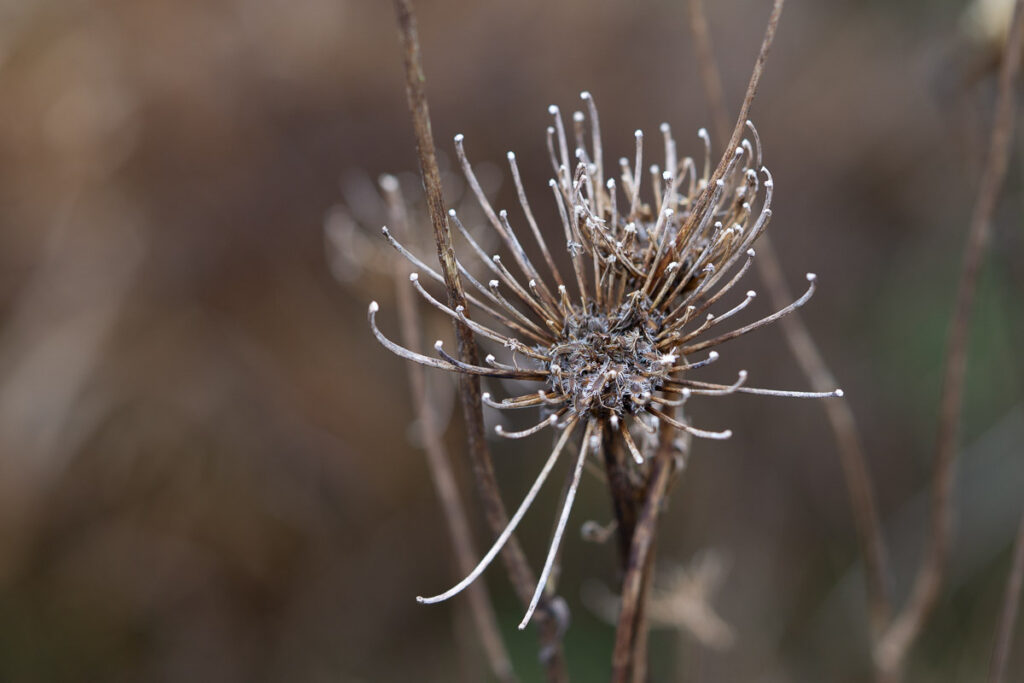
Downloadable guide
You can get all of this info as a downloadable guide! This one (and the one for the lookalikes) is available for free from my website. Click here to get yours!
These downloadable guides are one of my biggest offerings on my Patreon page, but I didn’t feel good about keeping this important information behind a paywall.
If you are interested in supporting my work to be able to do in-depth investigations like this, consider becoming a member!

